
Octopuses are marine creatures with rounded bodies, protruding eyes, and eight long arms. People call them the “monsters of the deep” because most of them live in deep waters. Want to know more about them? Look no further, here are some octopus facts!
- Octopoda is the scientific name of the octopus.
- There are over 250 species of octopus.
- They have three hearts.
- An octopus has 8 limbs.
- Like most creatures, they also have two eyes.
- Octopus is grouped within the class ‘Cephalopoda’ along with squids, nautiloids, and cuttlefish.
- They have a beak in its mouth at the center point of their eight limbs.
- Octopus lives in different places of the ocean such as pelagic waters, coral reefs, and the seabed.
- Although many octopuses are known to live in the intertidal zone (area within the tidal range), some of them also live at the abyssal depths.
- Some species of octopus can live down to the depths of more than 10,000 feet.
- The octopus’s ink expulsion is their best defense against predators to hide from their sight.
- They are also fast swimmers with a speed of 40 kilometers per hour.
- The term “octopus” came from the Greek word, ‘októpus,’ which means “eight-foot.”
- In general, most of the octopus species grow quickly and have fast maturity.
- Most octopus has a short lifespan between 1 year to 5 years depending on the species.
- You can find a freshwater octopus in the rivers of North America.
- Freshwater octopus spans 2 to 3 ft long.
- They are soft-bodied creatures.
- Octopus are also popular in mythology much like the “Kraken.”
- Normally, the male octopus dies within a few months after mating.
Octopus Facts Infographics
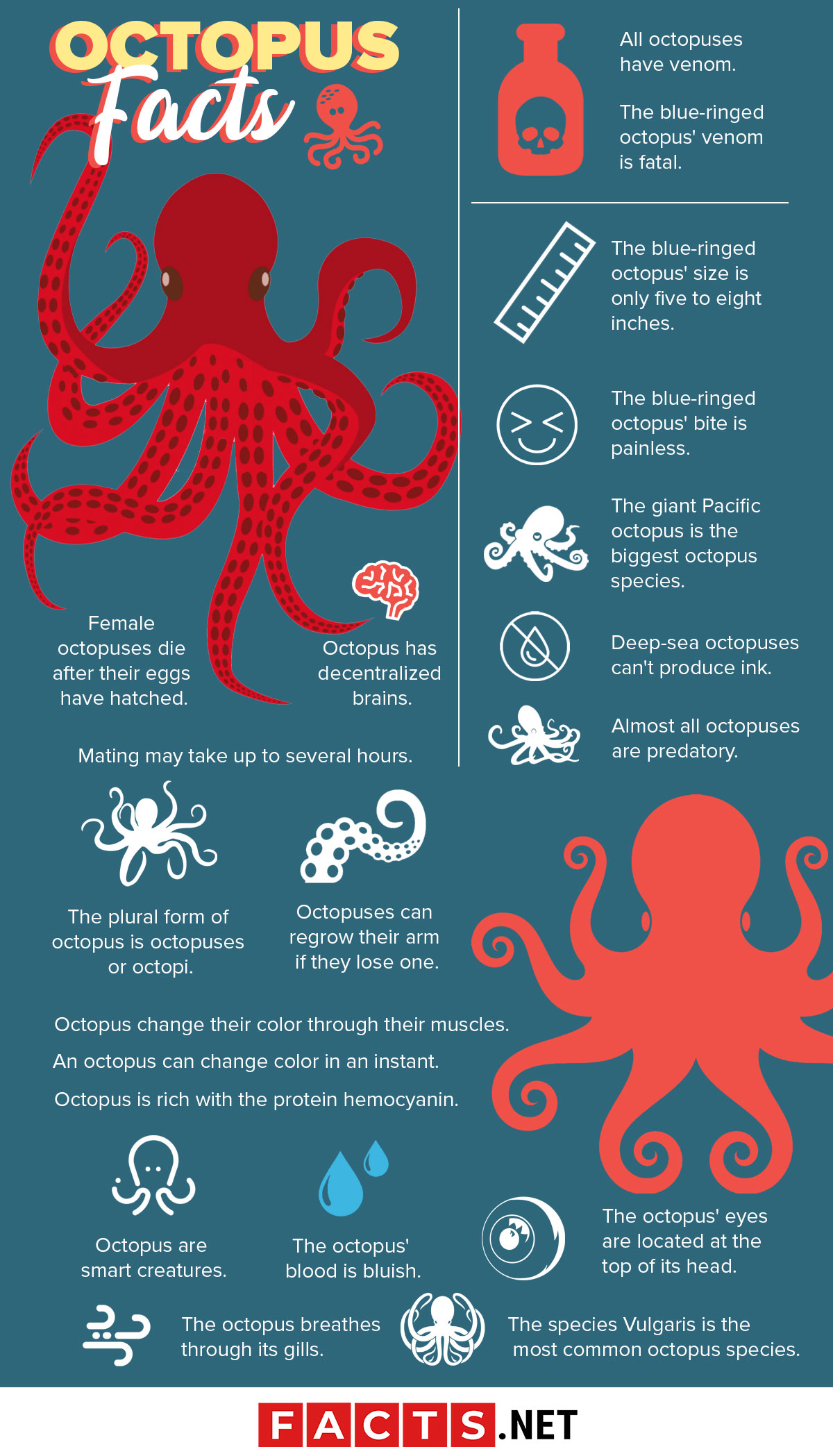
Female octopuses die after their eggs have hatched.
Aside from the fact that male octopus typically dies a few months after mating, the female octopus also dies shortly after their eggs hatch. The duration of egg incubation normally takes 2 to 10 months, depending on the species and water temperature. During which, the mother octopus stops eating, and only focuses on protecting her eggs from any danger.
Mating may take up to several hours.
When mating, the male octopus will insert his hectocotylus into the female’s mantle cavity and deposit spermatophores. The hectocotylus is the modified arm of the male octopus which they use to transfer sperm to the female. Depending on the species, the mating may take up to several hours.
However, there is a risk of the male octopus being eaten during mating due to the cannibal nature of the female octopus. To prevent this, they either mate in a distance, or the male octopus will mount onto the back of the female octopus, leaving time for his escape if things go wrong.
All octopuses have venom.
When an octopus catches its prey, it breaks into the shell and injects its venomous saliva into the prey to paralyze or kill it. Although all octopuses have venom, not all of them are dangerous to humans. Only the blue-ringed octopus is fatal just with one bite.
The blue-ringed octopus' venom is fatal.

The blue-ringed octopus is the world’s most venomous marine animal. This octopus can paralyze and kill an adult human with a single bite. They are commonly found in the coral reefs and tide pools in the Indian and Pacific oceans.
The blue-ringed octopus' size is only five to eight inches.
The blue-ringed octopus has a life span of around two years and varies depending on their nutrition, environment, temperature, and intensity of light in their area. They are also small compared to most octopus species with a size of only five to eight inches.
The blue-ringed octopus' bite is painless.
A blue-ringed octopus’ bite is often painless. Therefore, many victims of the blue-ringed octopus suffered from the effects and they are harmed even without knowing it.
The giant Pacific octopus is the biggest octopus species.
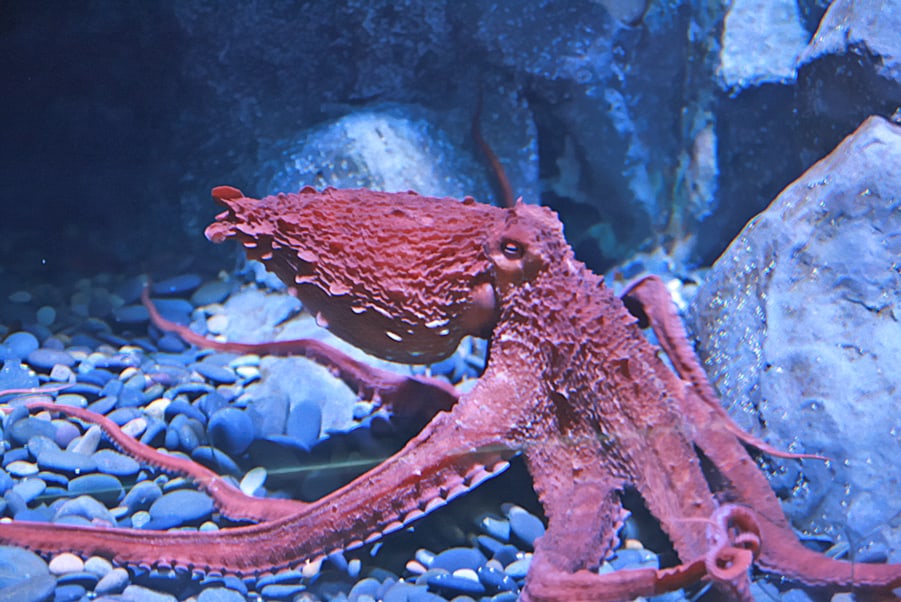
The giant Pacific octopus or ‘Enteroctopus Dofleini’ is the biggest known octopus species. The adult giant Pacific octopus weighs around 33 lbs. Their arms span up to 4.3 m or 14 ft. The giant Pacific octopus is also known as the Northern Pacific giant octopus.
Octopus has decentralized brains.
Octopuses have decentralized brains and the majority of its neurons live in the arms. Those neurons assist the arms to independently touch, taste, and have their own basic motions giving the impression that octopus has nine brains.
Deep-sea octopuses can't produce ink.
All octopuses can produce ink except for those octopuses that live in the deep open ocean. The octopuses’ ink comes from the ink sacs in their gills. They squirt ink when they face danger and need to escape from their predators. Their ink is accompanied by mucous when produced.
Almost all octopuses are predatory.
The bottom-dwelling octopuses feed mainly on polychaete worms, whelks, clams, crustaceans. On the other hand, open-ocean octopuses feed mainly on other cephalopods, prawns, and fish.
The plural form of octopus is octopuses or octopi.
Although most people use the word octopuses as the plural form of an octopus, according to the Merriam-Webster dictionary, ‘octopuses’ and ‘octopi’ are both correct and the plural of octopus.
The species Vulgaris is the most common octopus species.
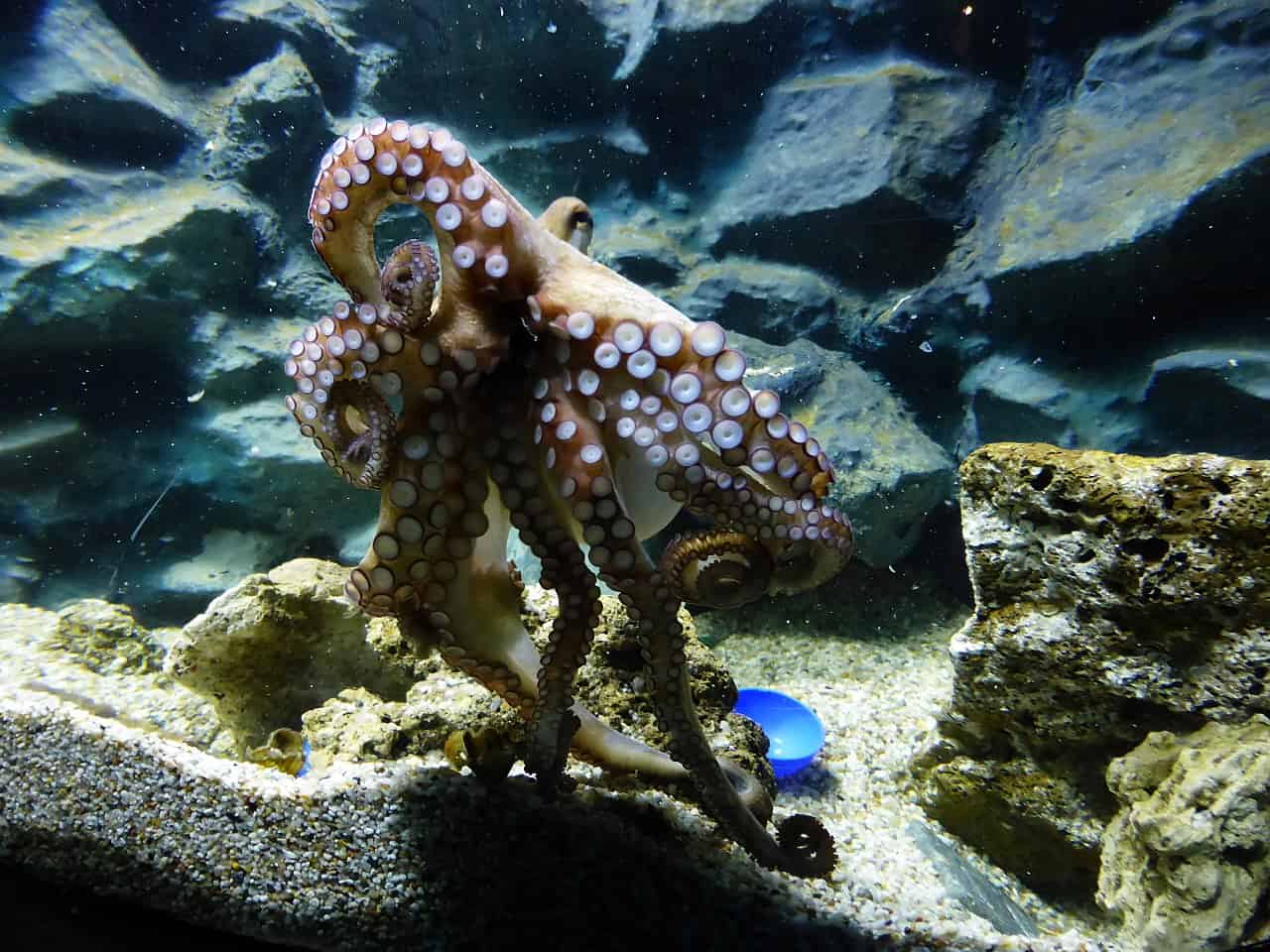
Also known as the common octopus, this species of octopus belongs to mollusks class Cephalopoda. It has been commonly studied among the octopus species. These octopuses live across the globe. They are more commonly found in Japanese waters, the Mediterranean Sea as well as the Eastern Atlantic Ocean.
Octopuses can regrow their arm if they lose one.
These soft-bodied octopuses are invertebrates – they don’t have bones. So their tentacles or “arms” are vulnerable to damage. The regrowth process will start as soon as they lose their tentacle or after it has been damaged.
An octopus can change color in an instant.
Octopuses can change their skin colors in the blink of an eye! The ‘chromatophores’, special cells of the octopus, are the reason behind their amazing transformation. These special cells beneath their skin have thousands of colors.
Octopus change their color through their muscles.
How does this happen? Each chromatophore cell has a flexible sac filled with pigment, called cytoelastic sacculus. If the muscles around the sac tense, the sacs stretch, so more color is visible in the octopus’ skin. This will give them a brighter color. On the other hand, if they relax their muscles, the sacs shrinks back to their size, so the pigment is less visible.
Octopus are smart creatures.
Their ability to change colors, using greater force compared to their body weight, and squirt ink when they feel threatened is the evidence of its problem-solving skills. It is also a part of the evolution of its intelligence.
The octopus breathes through its gills.
Like fish, the octopus is breathing by extracting the water through their gills. When the octopus is out of the water, they cannot breathe as their gills are no longer buoyant. However, they can still survive for a short time.
The octopus' eyes are located at the top of its head.
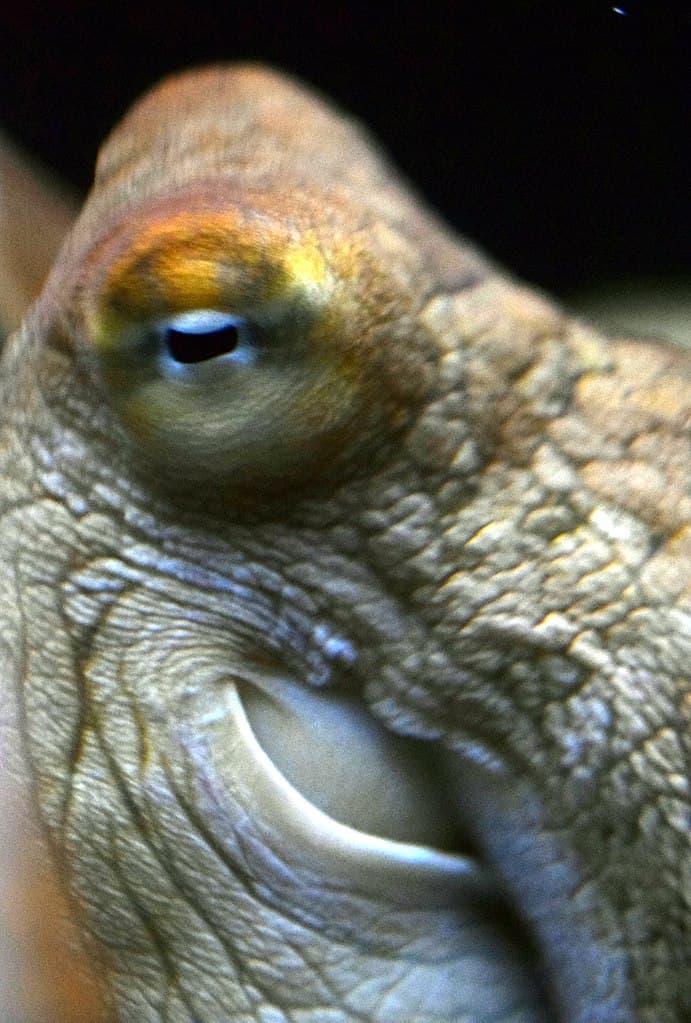
The eyes of the octopus are big and located at the top of its head. The octopus’ eyes are comparable or similar in the structure of most fishes and it’s enclosed in a cartilaginous capsule combined to its cranium.
Octopus is rich with the protein hemocyanin.
Hemocyanin, a copper-rich protein, helps transport oxygen around the octopus’ body. However, this protein makes the blood very viscous, so it needs substantial pressure to pump it around the whole body. Due to this, the octopus’ blood pressure can exceed 75 mmHg or 10kPa.
The octopus' blood is bluish.
When the octopus is in a cold environment with low oxygen levels, hemocyanin carries oxygen more efficiently than hemoglobin, a metalloprotein in the red blood cells that also transports oxygen. The hemocyanin is also dissolved in the plasma rather than being carried within blood cells making the octopus’ blood look bluish.
The octopus' tentacles "continue to live" for an hour.
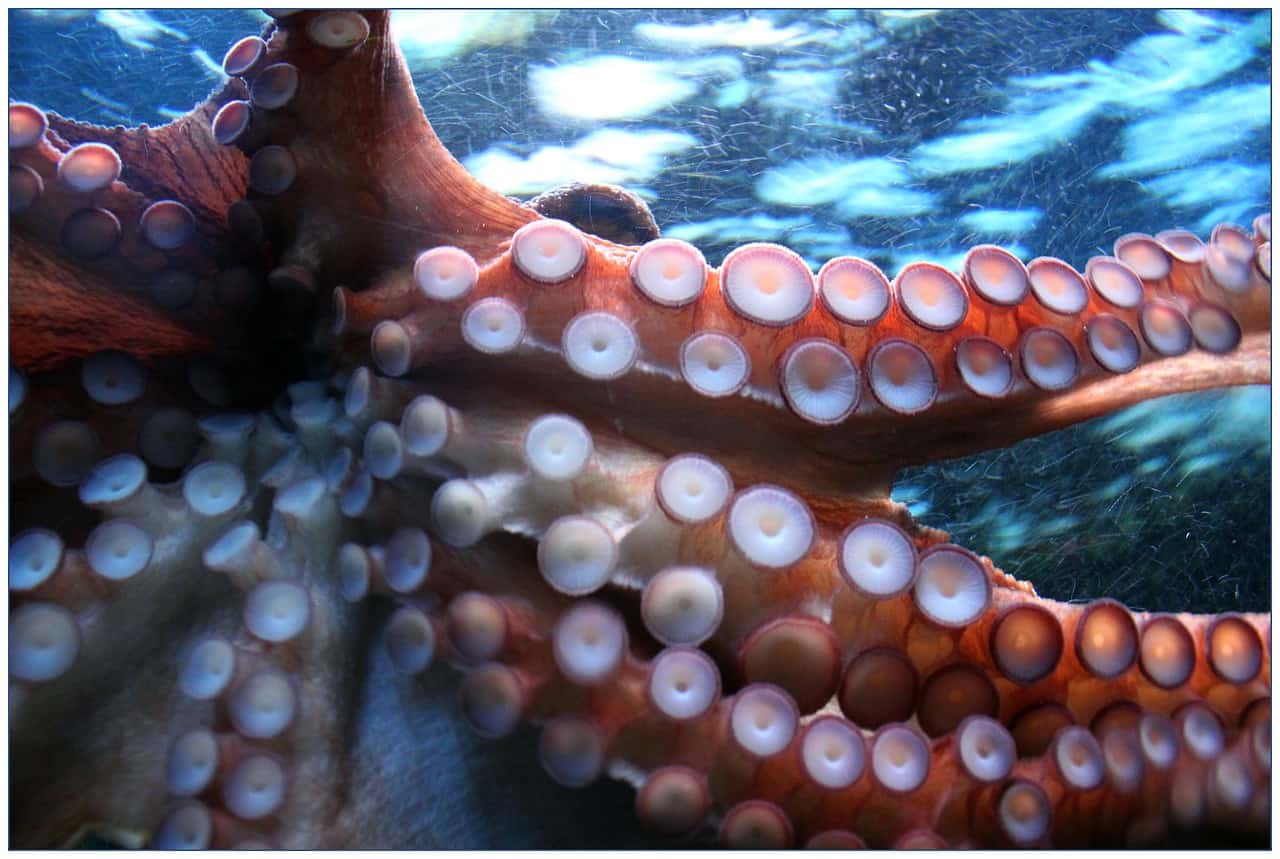
About an hour after the octopus has died, the octopus’ tentacles still have the ability to move and react. The tentacles can continue to pick food and place it on its mouth.
The octopus' taste is similar to calamari or squid.
Octopus can be served both raw or cooked. When it’s cooked, the octopus has a unique smell and texture. The taste is like the calamari or squid, whereas its texture is similar to a slice of chewy pork. Although, its flavor mostly varies on the ingredients served with it.
Octopus has a slightly sweet taste.
Raw octopus has a slightly sweet taste. Raw octopus delicacies like octopus sushi or tako are popular in sushi restaurants. They have a chewy texture which makes it a perfect addition to salads.
Live octopus is a delicacy in South Korea.
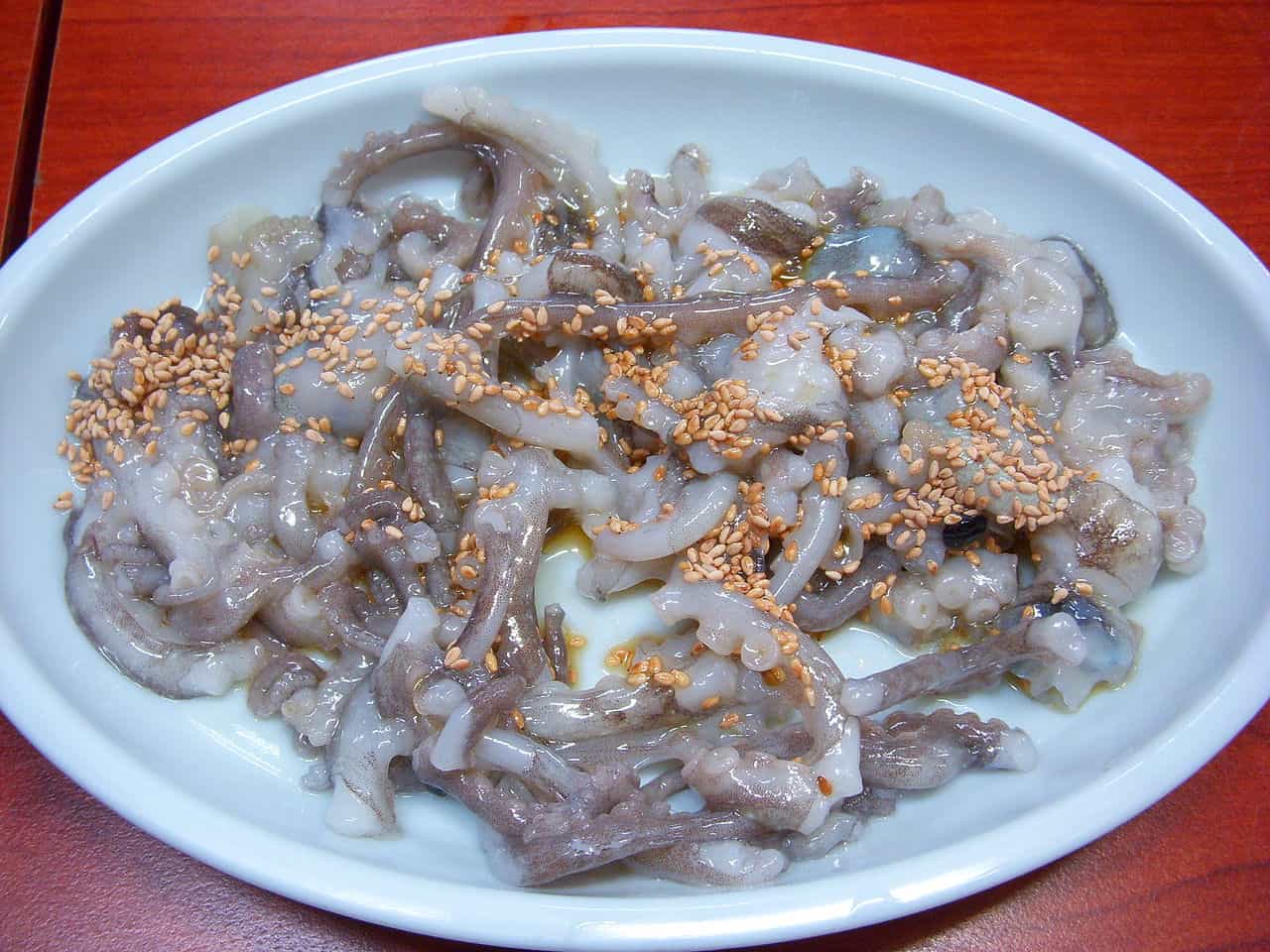
Live octopus, or san-nak-ji, is a delicacy in South Korea. It is believed to be a “stamina booster” primarily during the summer season. For some, eating live octopus is said to be good for the blood sugar levels.
Eating wiggling octopus is not a good idea.
A 71-year-old man in South Korea choked to death after eating a chopped but wiggling octopus tentacles. Reportedly, the old man had been asking for help for respiratory difficulty. Although the restaurant’s employee called an ambulance to get proper treatment in a hospital, it was too late. Police reports revealed that the octopus suckers had blocked the airway of the old man, eventually causing the loss of oxygen.
It's not uncommon to see customers suffocate while eating live octopus.
Each year, more than five people perish just by eating live octopus. It is because of the octopus’ tentacles that sucks in the throats of the victims resulting in accidental suffocation. This problem is so widespread that restaurants and bars serving live octopus had to display warnings for customers to “chew thoroughly before swallowing.”
They have many predators in the ocean.
The octopus is not just a tasty meal for humans but also from its predators in the ocean such as sharks, dolphins, whales, seals, and other large varieties of fish.
Octopuses are non-social creatures.
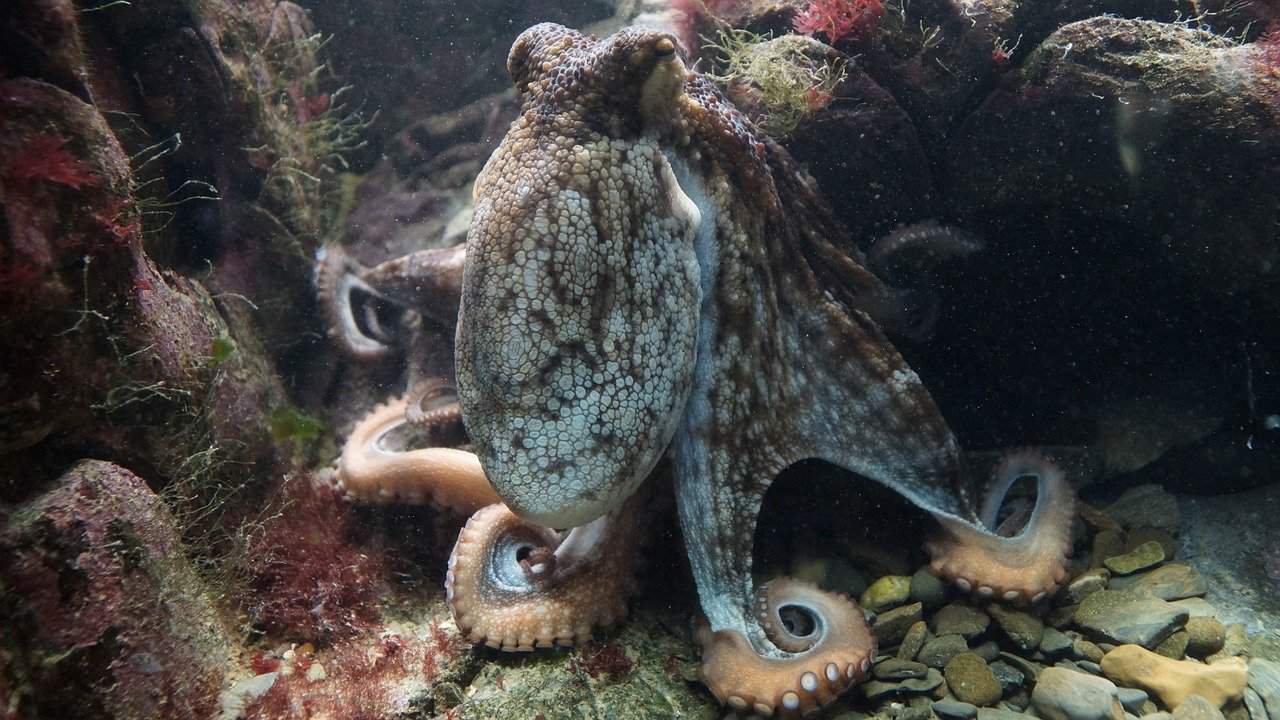
Although there is an ongoing study about some species showing social skills, octopuses are non-social creatures and they prefer to live alone in dens made from rocks.
They can build their own dens.
An octopus can build their own shelter or dens using shells or moving rocks secured by its powerful tentacles.
They have better vision than humans.
Aside from having a good sense of touch, octopuses have very strong eyesight. They have a clear vision of their surroundings. This gives them a slight edge of advantage to escape from predators as well as catching prey. An octopus also has many photoreceptors, a sensory cell that responds to light falling on it, than vertebrates.
Was this page helpful?
Our commitment to delivering trustworthy and engaging content is at the heart of what we do. Each fact on our site is contributed by real users like you, bringing a wealth of diverse insights and information. To ensure the highest standards of accuracy and reliability, our dedicated editors meticulously review each submission. This process guarantees that the facts we share are not only fascinating but also credible. Trust in our commitment to quality and authenticity as you explore and learn with us.
